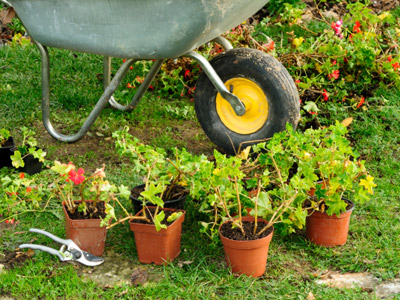
Ask the AI Tutor
Need help with Biology - Reproduction (AQA)? Ask our AI Tutor!
AI Tutor - Lucy
Connecting with Tutor...
Please wait while we establish connection

Cuttings are a very cheap and easy way to produce plants that are genetically identical to the parent plant.
Biology - Reproduction (AQA)
Reproduction makes new individuals. In GCSE Biology, you compare how plants and animals use specialised cells, fertilisation and development to pass on genes to the next generation.
1 .
How does sexual reproduction lead to evolution?
It was discovered by Darwin
It mixes the genes from the two parents
It creates a completely new set of genes
The genes change during fertilisation
Every fertilisation results in the creation of a unique set of genes within the new individual which will be similar, but never identical, to the parents. Natural selection will mean that the most successful genetic combinations will survive and reproduce, passing on the useful characteristics
2 .
Tissue culture requires only very small parts of a plant but is more expensive than taking cuttings. Why?
It can only be carried out in a professional laboratory
It requires a lot of specialist equipment
It takes a long time to produce only very small numbers of new plants
It needs sterile agar jelly with plant hormones and lots of nutrients
Cuttings are a very cheap and easy way to produce plants that are genetically identical to the parent plant. The downside is that not all cuttings are successful
3 .
In human reproduction, which hormone prepares and maintains the uterus lining to receive the zygote?
Oestrogen
Progesterone
Testosterone
FSH
Oestrogen stops the production of the hormone FSH and promotes the production of luteinising hormone which stimulates the release of a mature egg from the ovary. Testosterone is an important male hormone. FSH causes an egg to mature in the ovaries
4 .
Which of the following options best describes sexual reproduction?
The joining of male and female gametes
The separation of male and female gametes
The formation of male and female gametes
Nothing to do with male and female gametes
When the two gametes, the egg and sperm or pollen and ovule, have fused (joined) we say that the egg or ovule has been fertilised
5 .
Variation between individuals in an animal population is genetic but may also be caused by what?
The conditions in which they live
How much they get to eat when they are growing
Disease
All of the above
These are examples of environmental variation and will not be passed on to later generations
6 .
What do we call the cell formed when fertilisation has occurred?
Double gamete
Epithelial cell
Zygote
Whytecote
An animal zygote grows in the uterus to become a new individual. A plant zygote develops to become a seed
7 .
The genetic information passed from parent to offspring is contained in what?
In genes that are found in the cytoplasm of a cell
In genes carried by chromosomes in the nucleus
In chromosomes carried on the genes of the gametes
In the female gamete only
From your studies of genetics, you should know that chromosomes are made up from genes and that chromosomes are found in the nucleus of cells. If the third option sounded tempting as the right answer, read it carefully - are chromosomes carried on genes or vice versa?
8 .
Which one of the following statements about plant reproduction is false?
A zygote is formed during the process of fertilisation
All plants reproduce by either sexual or asexual reproduction
Reproduction in a plant results in the formation of a new plant
In sexual reproduction, the offspring of a plant is identical to one of the parents only
This question actually tests your knowledge of sexual reproduction in general. You are expected to know that sexual reproduction involves genes from both parents. It is the same for both plants and animals
9 .
Which of the following is not an example of asexual reproduction?
Runners
Plantlets
Pollination
Taking cuttings
Pollination involves gametes and fertilisation and can produce new varieties of plants. Asexual reproduction produces clones - genetically identical to each other and the parent plant
10 .
What do we call the process in which a zygote is created artificially by scientists or doctors?
In tubus fertilisation
In vivo fertilisation
In vitro fertilisation
In vitro mating
IVF is used in human fertility treatments and to create animal clones. The zygote must be implanted into a uterus of the host animal
**Unlimited Quizzes Await You! 🚀**
Hey there, quiz champ! 🌟 You've already tackled today's free questions.
Ready for more?
Ready for more?
🔓 Unlock UNLIMITED Quizzes and challenge yourself every day. But that's
not all...
not all...
🔥 As a Subscriber you can join our thrilling "Daily Streak" against other
quizzers. Try to win a coveted spot on our Hall of Fame Page.
quizzers. Try to win a coveted spot on our Hall of Fame Page.
Don't miss out! Join us now and keep the fun rolling. 🎉
**Unlimited Quizzes Await You! 🚀**
Hey there, quiz champ! 🌟 You've already tackled today's free questions. Ready for more?
🔓 Unlock UNLIMITED Quizzes and challenge yourself every day. But that's not all...
🔥 As a Subscriber you can join our thrilling "Daily Streak" against other quizzers. Try to win a coveted spot on our Hall of Fame Page.
Don't miss out! Join us now and keep the fun rolling. 🎉






